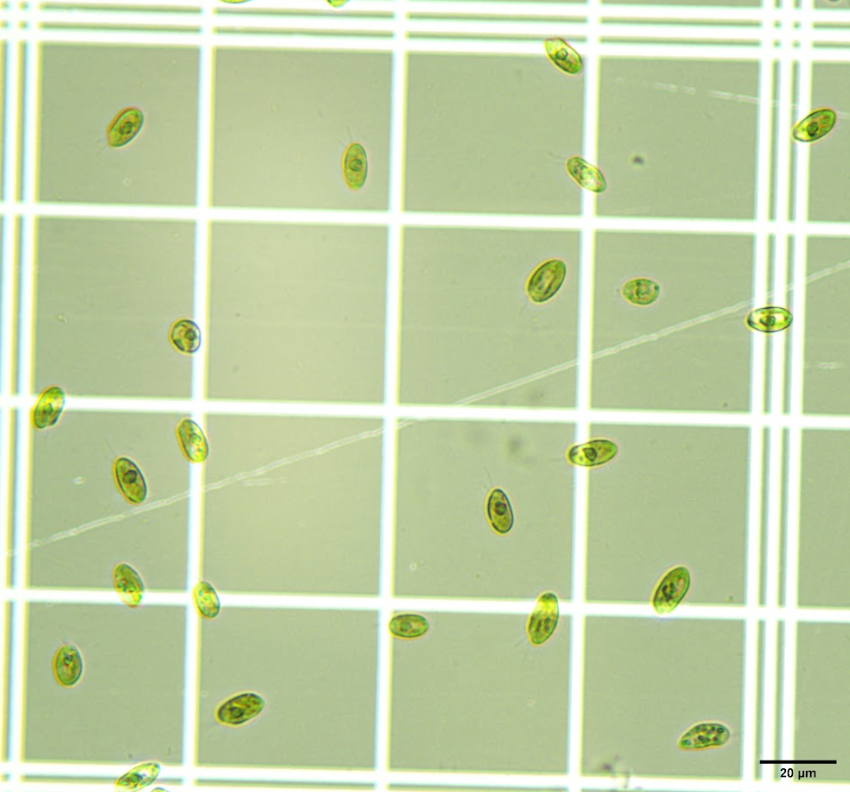September 26 2023
Why use Rhodomonas for feeding aquatic animals?
Have you ever come across a beautiful reddish (and pink in my opinion) coloured algae? That algae may have been rhodomoas, one of our favourites!
Rhodomonas culture for feeding oysters and other aquatic animals
Particle Size
Rhodomonas algae have medium cell sizes, which makes them an ideal food source for older oyster larvae. The cells are well-suited for the small filtering apparatus of young oysters, allowing them to efficiently capture and consume the algae.
Nutritional Content
Rhodomonas is very rich in essential nutrients such as proteins, lipids, carbohydrates, and vitamins, which are crucial for the growth and development of older oyster larvae. These nutrients support their metabolism and provide the energy needed for their rapid growth stages.
Sustained Growth
When older oyster larvae are provided with a nutritious food source like Rhodomonas, it can lead to higher survival rates, faster growth, and healthier overall development. This is especially important during the critical larval stages (ie. setting) when oysters are most vulnerable to environmental changes and stressors.
Rhodomonas can be an excellent choice for feeding oysters, fish, and invertebrates during their early life stages. As is the case with most aquaculture, it is important to have a diverse feeding regime that includes other algal species to provide a balanced diet for older larvae.
How to cultivate rhodomonas?
Rhodomonas is a very sensitive algae, but it grows well in our bioreactors under proper conditions. The successful cultivation of Rhodomonas in bioreactors requires attention to several key factors to ensure consistent and reliable growth:
Temperature
Rhodomonas algae prefer specific temperature ranges for optimal growth. Our bioreactor has built-in temperate control to maintain the desired temperature for your strain and promote healthy growth without causing stress to the algae. We also offer a high-temperature option if your facility is not temperature-controlled.
Light
Like all algae, Rhodomonas requires sufficient light for photosynthesis, which is essential for its growth. Our bioreactors are equipped with LEDs that provide the necessary intensity and spectral range for optimal photosynthesis.
Nutrients
Rhodomonas requires a balanced supply of nutrients, including nitrogen, phosphorus, and micronutrients, for robust growth. These nutrients can be provided through a culture medium that is regularly replenished or through continuous nutrient feeding. For a deeper dive into nutrients check out this Nutrient article.
Mixing and Aeration
Proper mixing and aeration of the culture medium inside the bioreactor are essential to ensure uniform distribution of nutrients and gases, as well as to prevent the settling of algae cells.
pH Control
Maintaining a stable pH level is crucial for Rhodomonas cultivation. Algae growth can be inhibited or promoted based on the pH of the culture medium. We usually recommend culturing Rhodomonas at a pH of around 7.9, but of course, there can be exceptions to this depending on your strain which we would be happy to discuss in more detail. Our bioreactors automatically monitor and maintain the pH at your desired level, so you can take worrying about the pH off your mind. To learn more about algae growth and pH check out this CO2 and pH article written by our biologist, Jennifer Long.
Last but not least, you will need clean inoculum. Inoculating with a clean inoculum will set your algae up for success. In our PBR 1250L we recommend inoculating with a 20 L carboy. Our team of skilled staff can guide you on best practices for inoculum generation, all the way through to the final harvest.

